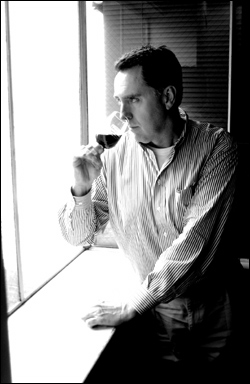How quickly we come to take the remarkable for granted. Our European forebears have been transmuting grapes into wine for 3,000 years or so. In California, they’ve been at it going on 300. In Washington state, a few dubious exceptions aside, grape-growing and winemaking goes back about 30 years. And yet we don’t even blink, paging through Wine Spectator or Wine & Spirits, when we find a Quilceda Creek cabernet firmly lodged among the 90-plus scorers cheek by jowl with the best of Bordeaux, or the Red Mountain appellation mentioned in the same paragraph with Chateau-neuf-du-Pape.
There’s no question that Washington (and Oregon) wines, at their best, deserve their new visibility and status. But merit alone, as Ecclesiastes used to remark, wins no horse races. Before Washington could earn its place among the world’s fine wine regions, the people who make and break reputations had to be persuaded to taste it and—not at all a foregone conclusion—acknowledge its quality.
In Washington state, the persuasion job has been skippered for the last eight years by Steve Burns. Building on a firm but modest base established by his predecessor Simon Siegl, Burns and his colleagues and associates at the Washington Wine Commission have created a brand recognized in markets around the world, and done it on an annual budget smaller than what Wrigley spends to keep Spearmint in the public eye. When Burns departs this summer to return to his native California, the commission will have its work cut out replacing him. But such is the momentum built up over the last eight years that there should be no shortage of top contenders for the post.
Most of the commission’s good work takes place out of sight of local eyes and media. In Seattle, it’s the commission’s annual food and wine extravaganza Taste Washington (taking place this year on April 18) and August’s Auction of Washington Wines charity bash that get the attention. But the commission’s real work happens elsewhere, in carefully prepared, meticulously orchestrated, and assiduously followed-up-on mini–Taste Washingtons held in cities far from home.
Burns and the Wine Commission staff leverage their almost derisory million-a-year budget by exploiting all the resources of the industry. Preparing a campaign to raise the visibility of Washington wine in a market, they canvass winemakers and distributors for any contacts they may already have in the target market, hire knowledgeable locals to establish restaurant, retail, and media contacts, and spend what it takes to set their sales event apart from routine tastings (in L.A., for example, renting the House of Blues for a day).
In recent years, not content with creating a good impression off-site, the commission has begun inviting contacts back to Washington to experience our far-flung wine regions for themselves. It’s gone after hard-to-crack international markets with events like the Columbia River Wine Expo, inviting international buyers and tasters to experience the region along with its wines.
The commission hasn’t been shy about recruiting out-of- industry advocates, either. Among those qualified to sport the title “Washington Wine Ambassador” are Attorney General (and gubernatorial candidate) Christine Gregoire (who sees to it that Washington wines are on the banquet tables at conferences of state AGs) and Sen. Patty Murray.
Key to the state’s success in putting itself on the world wine map has been the remarkable unity-in-diversity of the industry. One company, Stimson-Lane, commands 60 percent of the market with its Ste. Michelle and other labels, but, far from taking advantage of its size to hog the market, Stimson-Lane has warmly supported the development of a broad-based wine economy, from tiny boutique brands to large commercial operations rivaling some of its own divisions in size.
The willingness of producers and growers large and small to work together to expand the market would seem simple common sense, but it isn’t all that common elsewhere (the fractious relations of its northern and southern wine regions has seriously hurt the Oregon industry’s ability to press its case in the marketplace).
Unlike some of his colleagues elsewhere in the American wine-promotion business, Steve Burns has never confused his own interests with those of the producers he represents: one good reason why those producers are so willing to invest their own resources in promoting the Washington industry as a whole. He has managed somehow to remain low-key, a coordinator and facilitator, while fiercely defending what he sees to be the good of the trade.
A few clouds on the Washington wine horizon—too-swift expansion of grape acreage leading to oversupply, ever- increasing competition in quality and price from abroad—suggest that Burns’ successor, however qualified, will find it hard to sustain the extraordinary growth of the past decade. Burns will have none of that theory. “The state’s total production doesn’t come close to the Napa Valley’s alone,” he says. “We may have temporarily reached a plateau, but what we’ve done so far is only the beginning.”








